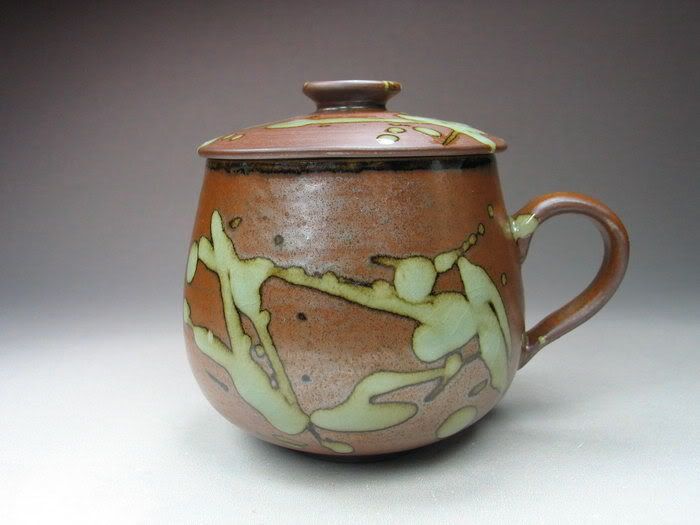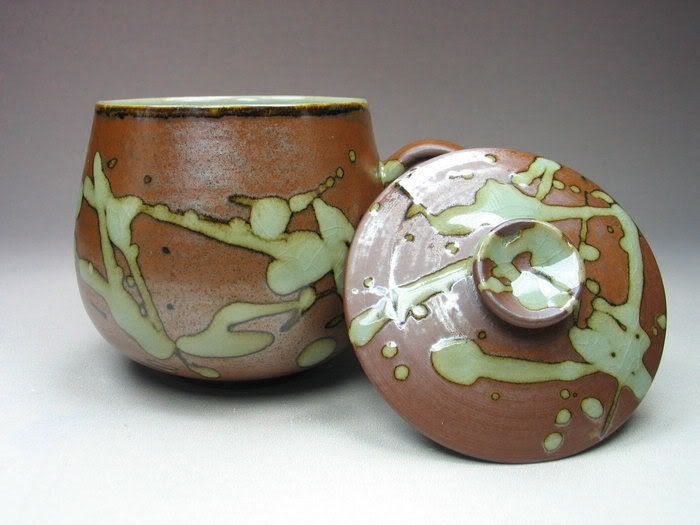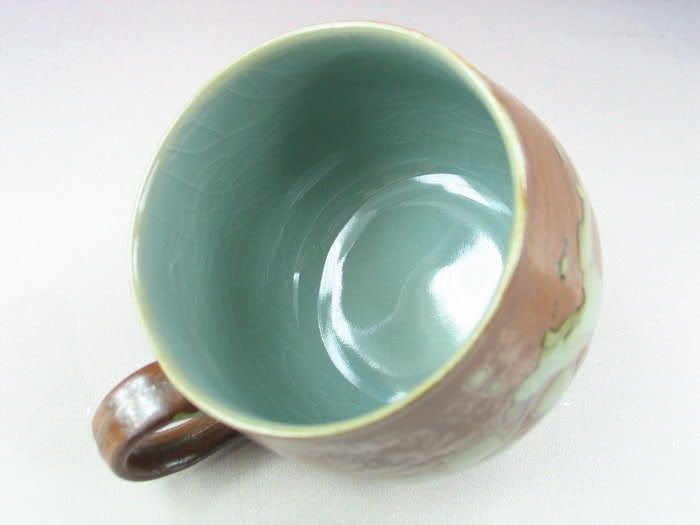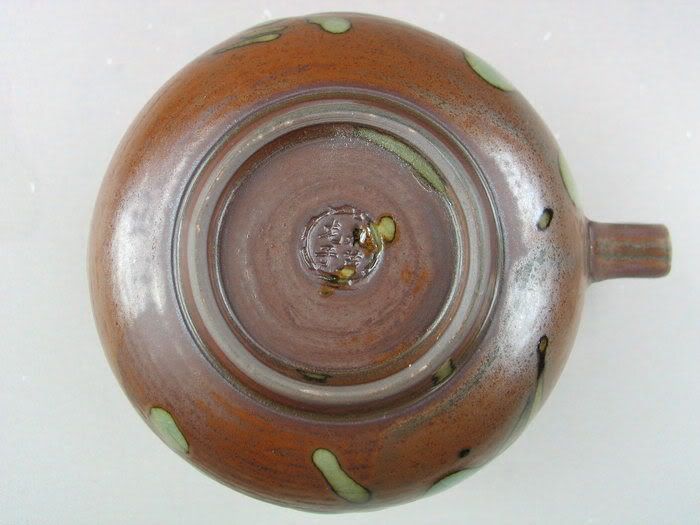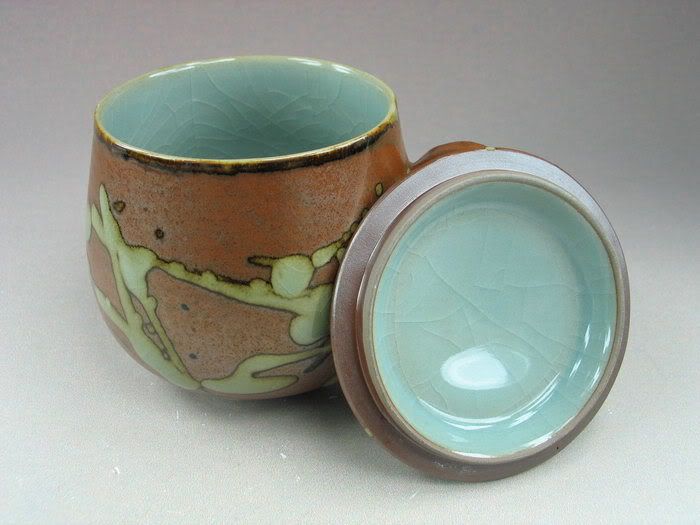chamekke wrote:Wow, britt, I love ALL the teawares whose photos you posted. One of the things I like best is how the photos give a sense of the cups' tactile qualities. It's so easy to imagine what each one feels like in the hand, and what it would be like to drink from. Incredible variety too!?"
Thanks chamekke. That ever so important "feeling" we've discussed before is something I didn't notice initially, but acquired as time went on and my interest in tea and the tea ceremony increased. As feeling or mood became more important, the type of teaware I preferred also changed, meaning I ended up replacing items I had already purchased.
I think by owing so much teaware, I may actually be violating tea's rules of simplicity. I felt better when I read that Sen Rikyu owned quite a few matcha chawan. I guess owning many simple things is okay!
chamekke wrote:... it's a mixed-marriage (mixed-relationship) issue, which invariably rears its head at some point when a TeaFanatic links up with a non-TeaFanatic. We must be patient with the deluded ones...!?"
Or convert them.
chamekke wrote:Actually, my significant other is a British-born individual who tends to equate tea with PG Tips (British-made black tea in bags), but over the past few months he has actually admitted a liking for Adagio's Citron Green, certain flavoured white teas (White Blueberry and White Peach), and even the occasional cup of sencha! And while he will never concede that I need all the teawares I've bought, he has started using some of them - the yunomi in particular.
Be patient; you're off to a good start. You might want to buy him his own yunomi that feels right to him and suits his own personal tastes. If he wants to use it for English teabags, then let him. Allow him to increase his interest in tea at his own pace, but you can lead him there. You may find that he becomes addicted like the rest of us. This may sound sneaky, but getting someone to regularly drink quality tea is good on many grounds; health, controlling emotions, sense of calmness, appreciating simplicity, and last but not least, sharing his wife's interests.
chamekke wrote:Also, I have to admit - it's not so much arguing that I need a kimono. If I owned only one, there would be no disagreement. The problem is that you can easily find yourself buying multiple kimono. In warmer weather you need unlined kimono; in hot weather (traditionally July and August) it is de rigueur to wear kimono that are not only sheer but also unlined. Depending on the season, you wear certain colours and patterns; depending on the occasion, you wear designs of greater and lesser formality. It's ridiculously complicated, and of course all of this makes an excellent excuse to buy multiple garments!
Luckily, second-hand kimono are not so expensive. Thank goodness for eBay and certain vintage-kimono e-commerce sites (e.g. Ichiroya and Yamatoku).
I can see why your husband might have a problem understanding or agreeing with this part. It's not unlike the western customs of different clothes for different seasons and fancy suits for special occasions. I think his problem may be that you need to do this twice now; four seasons and at least two formality levels for both everyday life and again for the attire required by practicing the tea ceremony throughout the year.
On the other hand, the tea ceremony is an intense interest of yours, it is of the utmost importance to you, you are learning a lot, and you are sharing that knowledge with others. This is really continuing education, and that IMO deserves some degree of support. You may need to compromise, at least for the moment.
Kimono is another aspect of the tea ceremony I hadn't thought much about. I don't mean the seasons or formality level, but the complicated process of how to wear one properly in the first place.
I had a girlfriend I met when she was a waitress in sushi restaraunts, including one owned by a famous Japanese shotokan master. This restaraunt drew in many Japanese customers who were visiting the US.
One Japanese waitress had learned she could get better tips if she relaxed the traditional kimono rules a bit. Although male Japanese customers didn't mind the lack of tradition, their wives did. Although my girlfriend was Chinese, the unhappy wives pointed to her as an example of how a kimono should be properly worn. My friend explained the rules to me, and although I don't remember what they were, they did seem a bit complicated.
It appears that any one of the many things involved in the Japanese tea ceremony could itself provide a lifelong challenge.

